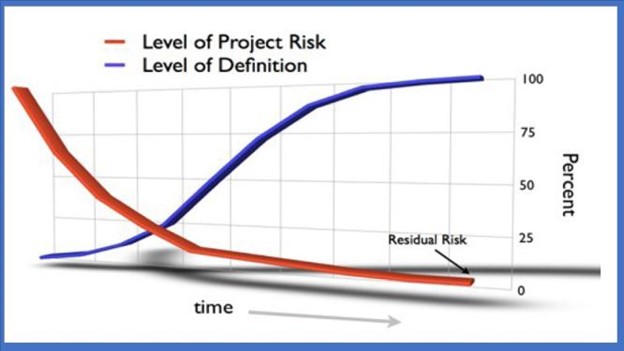INTRODUCTION TO EPC CONTRACTS Part 3

Part 1 of this series offered brief insights into the basics of EPC contracts. Part 2 underscored the need for every project key personnel to read and understand the scope of the contract as well as the terms and conditions, especially payment terms. In this piece I intend to discuss contracts as a risk management strategy.
It is important that contractors understand that organizations use contracts as risk management measures and select appropriate types of contracts for different types of projects depending on how much risk they intend to retain or transfer. The degree of risk that the buyer intends to share with the seller determines the type of contract.
For example, cost-plus contracts transfer cost risks to the buyer, while fixed-price contracts transfer the same risks to the seller. Beyond this, various contract provisions are inserted to limit the liabilities of the buyer while transferring same to the seller. In other words, the contract type chosen, and the specific contract terms and conditions, indicate the degree of risk being assumed by the buyer and seller.
As I mentioned Part 2, this understanding will change the way contractors view contract clauses. Those who ignore this have often regretted their naiveté. I have heard contractors complain that they didn’t take some contract provisions seriously, only to discover too late that the buyer meant every word. If the buyer considers an apparently trivial or inconsequential issue serious enough to write it in the contract, the seller should take it equally seriously.
For most organizations, contracting strategy or the choice of an appropriate contract type is one of the most significant strategic decisions in project execution, because it determines, among other things, how the supplier would be paid and how risk is allocated between the parties. As a general principle, the selected contract type should aim to give the maximum likelihood of attaining project objectives.
That is why Rita Mulcahy wonders aloud why a buyer would ever consider hiring a seller that did not know about risk management. According to her, it would mean that their proposal or bid is based on old-fashioned guessing or some high-level metrics. It is not anchored on the kind of planning that would make you confident that they have the project management ability to control the project, and certainly not enough planning to ensure that their cost is realistic for the work needed on the project.
Exactly what do we mean by risk and where does it come from? Although there are many sources of project risks, the greatest of them, and one that has the greatest influence on contract type is project definition, how clearly the scope of work is defined. Poor project definition results in scope creep during execution. The clearer what is to be done is defined, the less the risk as illustrated by the graphics below.

Thus, the scope of work is the key element in the selection of contract type. If the project is very clearly defined as in most EPC contracts the buyer would most probably select a Fixed Lump Sum contract. But very rarely would a Fixed Lump Sum Contract be specified for a research or feasibility study project. In fact, that would be very bad practice.
Perhaps that is why Albert Einstein asked his famous question,
“If we knew what it was we were doing, it would not be called research, would it?”
If the owner cannot clearly define the scope of work, how do we expect a contractor to put a firm price on it? In such situations, the contractor or seller does not know exactly how much risk he is assuming.
This is often the cause of many disputes. Besides, it creates all kinds of contracting problems – from endless rounds of clarification during the bid process, to inability to tell when project is completed; the seller thinks he has accomplished all he was paid to do while the buyer asserts that some items of ‘undefined scope’ are still outstanding.
The level of details, clarity, and identification of performance objectives and expectations in the SOW drive all other conditions of the contract. It drives pricing structure, contractor’s entitlement to payment, and level of contract administration.
The greater the degree to which the buyer can articulate his needs accurately and clearly, the greater the likelihood that the seller will accept greater performance and cost risks associated with a particular type of contract.
We will begin to examine several types of contracts, when they are applicable, as well as the inherent risks next week.
Meanwhile, go here to dig deeper


